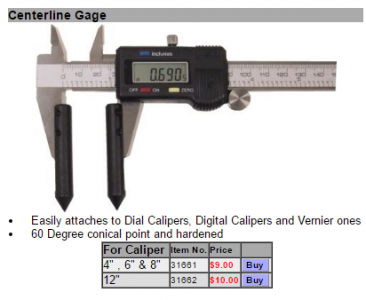- Joined
- Dec 20, 2012
- Messages
- 9,422
I'd like to suggest another option. I like and use a small machine vise on a tilting angle table that is perfect for smaller parts. Granted, I only have it for my Sherline mill at this point but I've done a whole load of stuff with it, and quite accurately, too. This allows me to grab the part sitting flat in the vise or on parallels instead of having the part angled in the vise.
An angle block set like Bruce showed above is good to have, provided the blocks are accurate. My set is an import set that I checked with a vernier Starrett angle gauge and its more than accurate enough for my needs. I use them to set the table angle in conjunction with a DTI and it works fine.
Granted, a sine vise will be more accurate but I rarely need that kind of accuracy. If I had a surface grinder then maybe I would use one. For milling an angle? No, haven't needed it so far.
An angle block set like Bruce showed above is good to have, provided the blocks are accurate. My set is an import set that I checked with a vernier Starrett angle gauge and its more than accurate enough for my needs. I use them to set the table angle in conjunction with a DTI and it works fine.
Granted, a sine vise will be more accurate but I rarely need that kind of accuracy. If I had a surface grinder then maybe I would use one. For milling an angle? No, haven't needed it so far.

